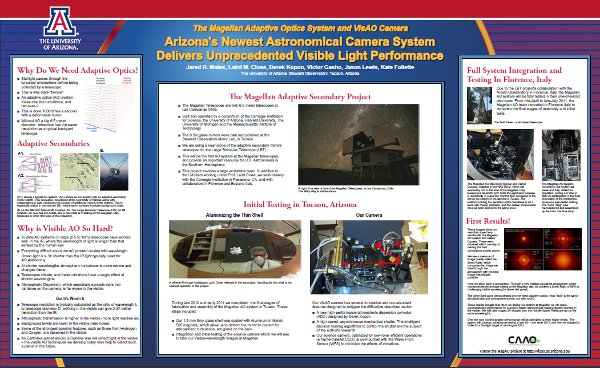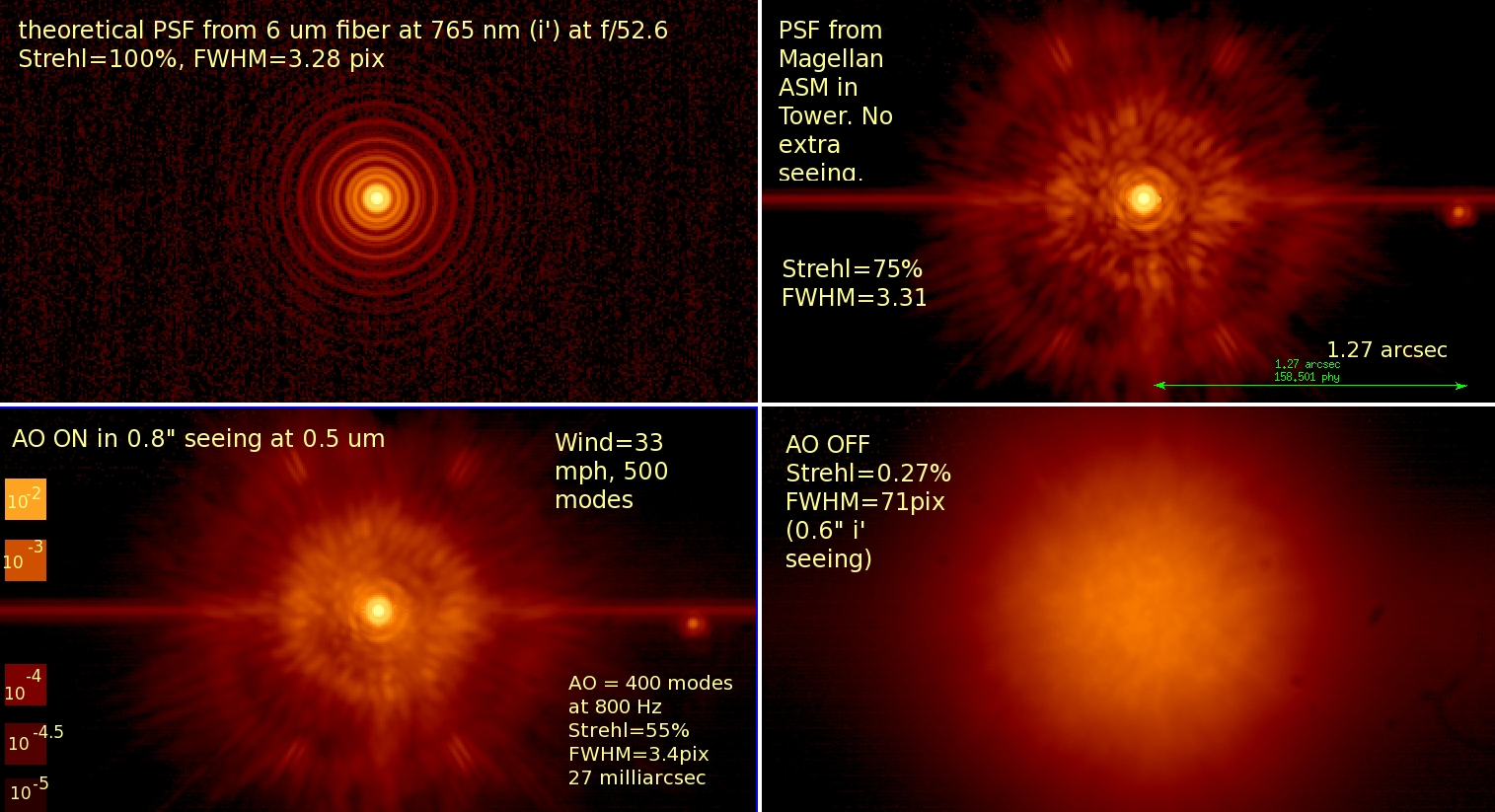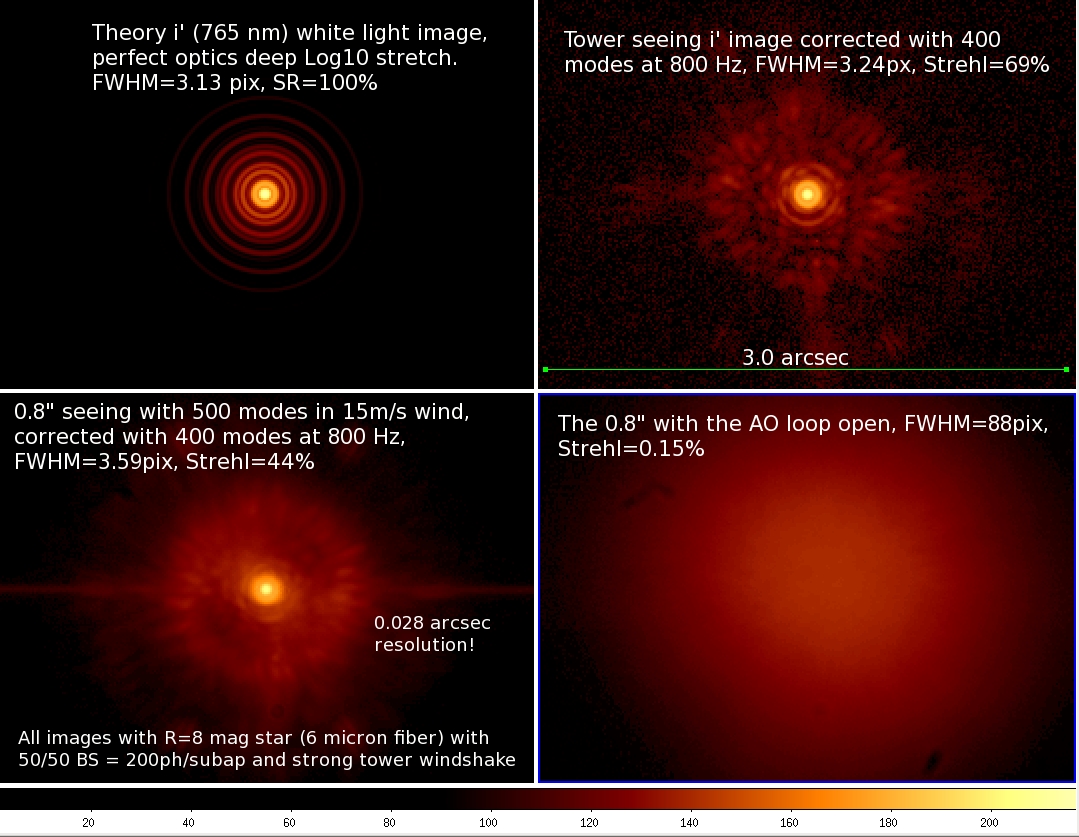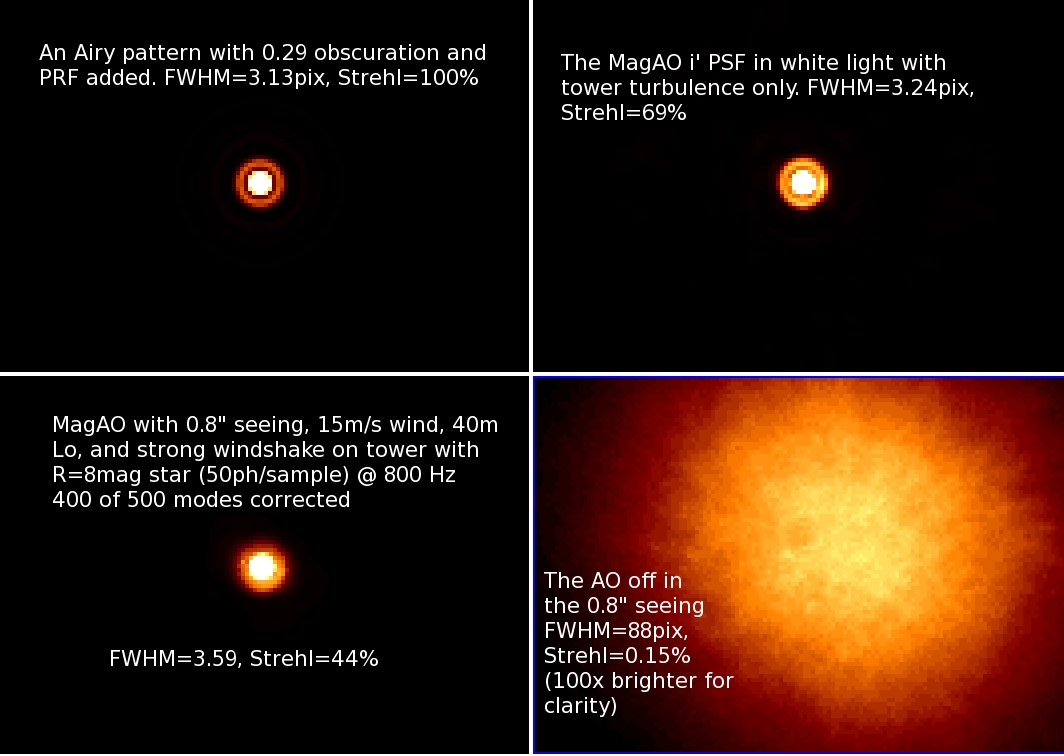Last week Laird and I had the pleasure of attending the Arizona Board of Regents meeting in Phoenix, and presenting a poster about the Magellan AO system and the VisAO camera. The session we were invited to was on the impact of scientific research on student’s education at Arizona’s universities. Click the image below to download the poster as a pdf. It contains an introduction to AO in general and visible AO in particular, as well as an overview of the MagAO project. We also took the opportunity to show off some of our exciting results from the test tower in Florence.




